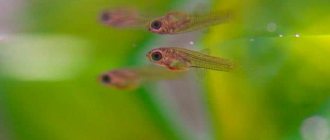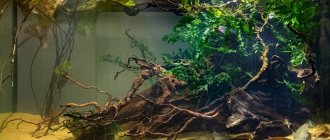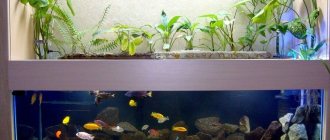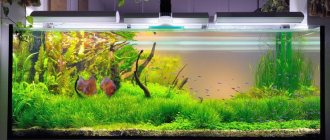Do-it-yourself ciliates-slipper
Author: Ekaterina Olegovna Chobanova, teacher of chemistry and biology, Partizanskaya Secondary School, p.
Troitskoye, Republic of Kalmykia Master class for 7th grade students.
Summary of the master class for 7th grade students “Making a model of a ciliate-slipper”
Master class stages
1. Preparatory and organizational stage:
Goal : consolidate the material studied on the topic “Type of ciliates, or ciliated animals.”
Tasks:
— develop students’ skills in working with illustrations and visual aids,
- stimulate cognitive interest in the subject of biology,
- cultivate a responsible attitude towards completing the assigned task.
Materials and equipment : white cardboard, scissors, thread, sewing needle, colored pencils (or markers), pencil, eraser, women's shoes with solid soles.
Contents of the stage:
Guys, today we got acquainted with the Type of ciliates, or ciliated ones. I suggest you become real creative biologists and make your own ciliate-slipper. This will be your creative homework. The layout can be made using any technique, there is room for your imagination to run wild. I, in turn, want to show you a master class on making a model of a ciliate-slipper. Someone might take note of it.
2. Main stage:
1. To make a model of a ciliate shoe, you will need the following materials: white cardboard, scissors, thread, sewing needle, colored pencils (or felt-tip pens), a simple pencil, an eraser, women's shoes with solid soles.
2. Take a sheet of white cardboard and place women’s shoes on it, which acts as a pattern, then trace along the outline with a simple pencil.
3. Using an eraser, we erase the nose part of our workpiece and draw it sharper and more elongated, like a real ciliate-slipper.
4. Now we cut out our cardboard blank with scissors.
5. This is what our future ciliate-slipper looks like.
6. Let's open our textbook again and remember what our object of study looks like and what its internal structure is.
7. Now you can safely paint our model; try to reflect as accurately as possible in your drawing the internal structure of the ciliate-slipper.
8. Using a sewing needle, we pierce the edge of our ciliate shoe, leave a thread on both sides of the model, about 3-4 cm, and tie it into a knot.
9. Cut off the excess thread and make the next eyelash.
Thus, along the entire contour, our ciliate-slipper is overgrown with real eyelashes.
10. Our model of the ciliate-slipper is ready. Now this is an excellent visual material that will take its rightful place among others in the biology classroom.
Final word.
Today you got acquainted with one of the methods for making a model of a ciliate-slipper. What will your ciliate shoe be like!? I suggest having an exhibition of your designs at the next lesson. Good luck!
Source
Breeding ciliates for fry
Tekhi
- Yuri, my chocolates have spawned. What to feed the fry?
Yu.V.
- Well, the starting food for fry is usually ciliates (slipper), and then brine shrimp. Although, I think that the fry of chocolates are large, brine shrimp will go right away.
Tekhi
“You know, the grumbling gouramis are also making suspicious noises, we’ll probably need ciliates too.” Can you tell me how to get it?
Yu.V.
- Sure, not a problem. It’s best to take a ready-made culture from someone, pour it into a jar and throw in a piece of dried banana skin. Place in a dark place
and in a few days you will receive your food.
You draw it up with a syringe and give it to the fry))
Tekhi
- And if there is nowhere to get it, then what?
Yu.V.
- Then it’s a little more complicated. Ciliates are always present in any aquarium. You siphon some water into a jar, preferably from the bottom, from the thick of the plants, and again throw in the banana peel. But there is one problem here.
Tekhi
- Which?
Yu.V.
- Along with the shoe we need, you will produce a lot of other things, most likely there will be a flash in the jar. And we don’t need all this in our little house. So you pause for a few days, and then make yourself an incubator))
Tekhi
- How is that?
Yu.V.
- Well, I take an ordinary bottle with a narrow belt and wrap it with black electrical tape up to the waist.
Then I cut the top off of it
I throw in dried banana peel
After which I pour water with ciliates from my jar up to the waist of the bottle
Tekhi
- That's all?
Yu.V.
- No. Now look carefully - I place the cotton wool in the belt of the bottle on the surface of the water. The belt prevents it from floating up))
And then I very carefully pour in clean water. Possibly running water.
And I put it on the windowsill.
Tekhi
- What does this give us?
Yu.V.
- Ciliates will strive for the light and will pass through the cotton wool into the illuminated part of the bottle. And all the bad stuff will remain under the fleece.
Look how many there are in a day
You will use a syringe to draw up the required amount of food for feeding and, as necessary, add fresh water. The ciliates under the fleece will multiply for a long time and rise to the top. A few weeks, for sure. And then replace it with a new batch from the jar.
Tekhi
— By the way, what should you do with the jar after you’ve drained the ciliates from it?
Yu.V.
- Add another dried banana and add water and again in a dark place))
Tekhi
- Clear.
Yu.V.
— By the way, even if you have a purchased “pure” culture of ciliates, it still makes sense to “rejuvenate” this culture once every few months by passing it through such an incubator.
Tekhi
- Is it because all sorts of unnecessary living creatures grow in it, but after such an incubator they do not get to the infusoria?
Yu.V.
— Of course))) Look, I took a picture through a small microscope with 30x magnification.
The ciliates themselves are clearly visible and it is clear that apart from them there is no “garbage” in the form of something larger or even smaller. Well, bacteria don’t count; the microscope doesn’t see them. And they cannot harm the fry. Scale mesh - 0.1 mm. Well, for a rough estimate of the size)
Tekhi
- By the way, why doesn’t it hit? Well, I understand that the larger ones cannot fit through the cotton wool, but what about the smaller ones?
Yu.V.
— A beautiful question))) I think this is because our shoes are able to actively move, roughly speaking, they crawl through the cotton wool, but various kinds of bacteria are not. And since there is no mixing of the water, they cannot get up through it. In any case, even if you pour water into the incubator with a flash tank, it will still be clean above the cotton wool))
Tekhi
- I understand everything, thank you
Yu.V.
- My pleasure. Good luck raising the fry!
Share link:
Similar
Miniature model “The Age of Dinosaurs with a Volcano”
In kindergarten, a child was asked to make a miniature - a model of a volcano in the era of dinosaurs. Since I am a creative person, I decided to approach this with all seriousness.











